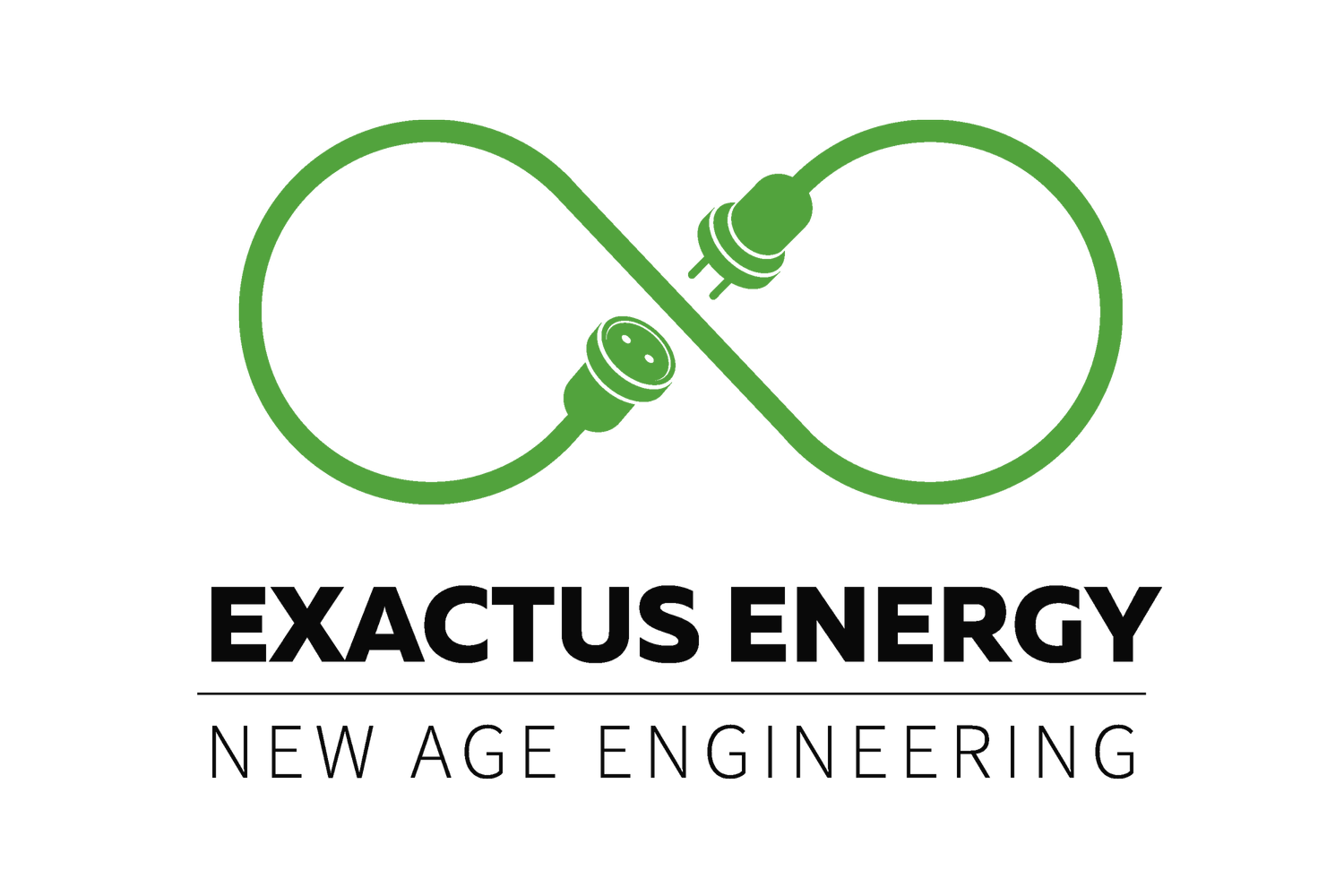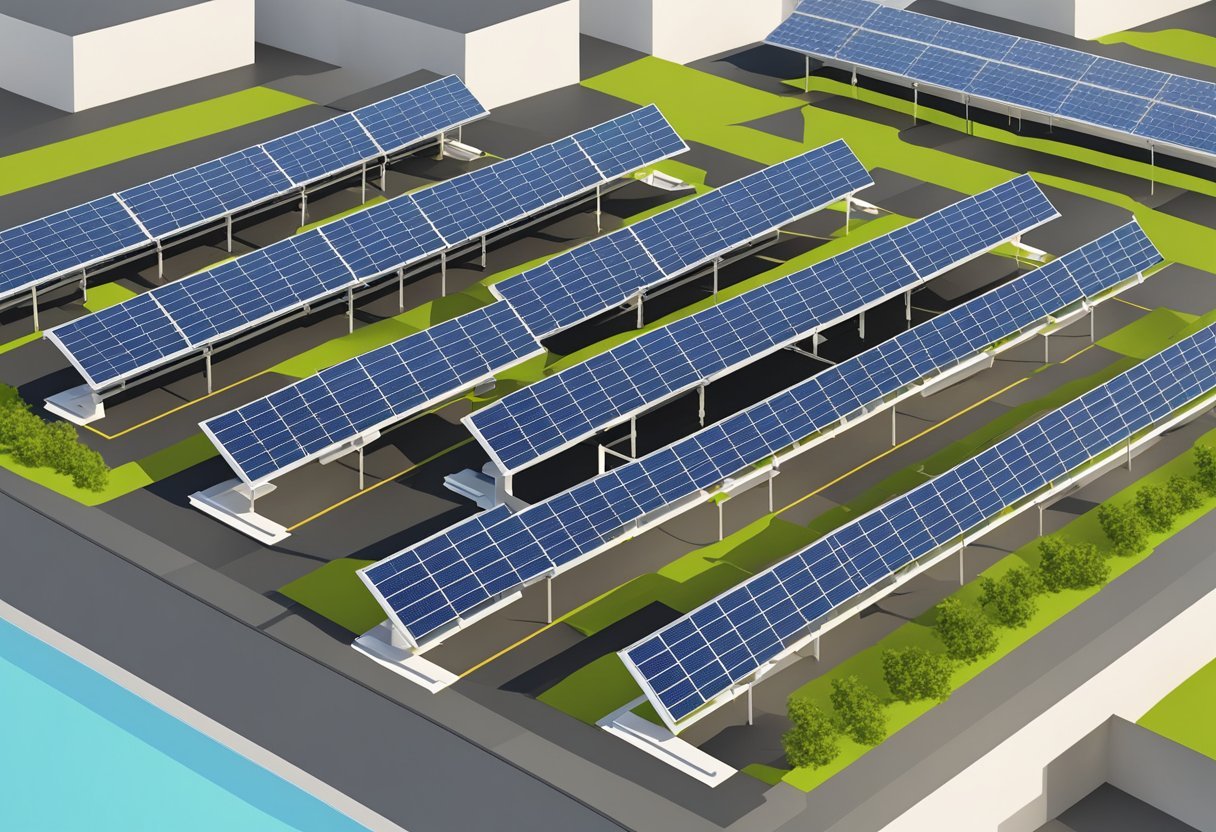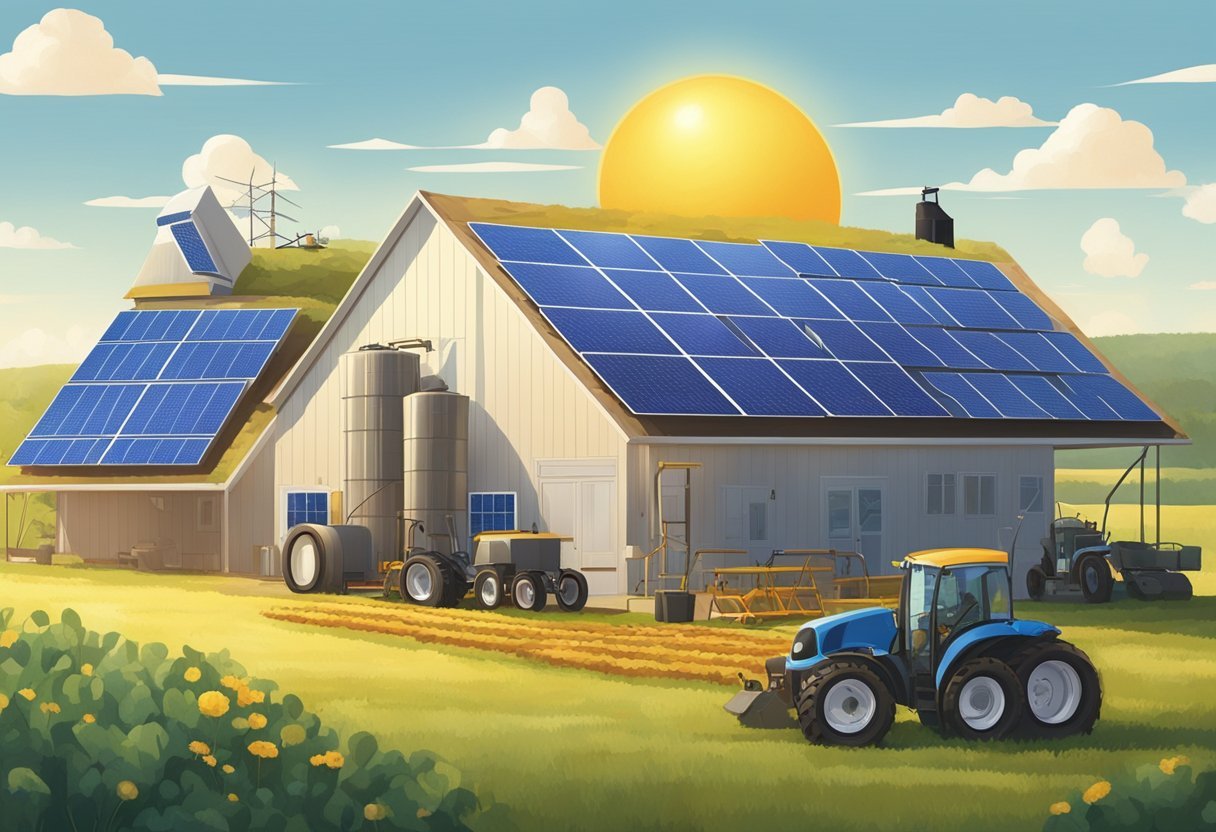PTO Solar. Sounds super corporate, right? It’s just short for “Permission to Operate.” Basically, it's the magical little handshake from your utility company that says, "Okay, fine, your shiny new solar setup can finally, officially plug into our grid and start making money." But getting that nod isn’t something you just request one afternoon. Nope—it's the very last, agonizing step in a whole long journey: the installers finish their sweaty work, the city inspectors come poke around to make absolutely sure everything’s safe and code-compliant, and then the utility company, the ultimate gatekeeper, double-checks every little technical detail. Only after all that happens do you get the official thumbs-up. It's an entire process, honestly.
PTO Solar Solutions
After a solar system is installed on a property, there is a sequence of steps that must be followed before it begins operating and generating energy savings. These steps include a meticulous application procedure, potential costs and fees, and meeting the requirements specific to local regulations.
The whole process is there for a reason—so when your system finally flips on, it actually runs the way it should and plays nice with the massive, complicated grid. But it’s not just about the actual wires and panels you can see. You’ve gotta wade through a real mess of technical steps, mountains of paperwork, and rules that change block-by-block. If you don’t get how all these little pieces fit together, the switch to solar can feel like a massive, endless headache. Understand it, though, and the transition’s a million times smoother. To be fair, most people don't realize how much paperwork is involved until they're in the middle of it.
Key Takeaways
Permission to Operate is the big final step. Without it, your solar system’s just sitting there, not really “on.”
Getting PTO means the system’s installed, the utility’s checked it out, and everything lines up with the local rules.
Following the steps the right way makes sure your system actually runs at its best and stays fully compliant.
Understanding PTO Solar
Before solar system owners can harness the sun's power within the electrical grid, they must navigate the critical step of obtaining Permission to Operate (PTO) from their utility company. This certification is essential for a safe and compliant connection to the power network.
What does "Permission to Operate" (PTO) mean?
Permission to Operate (PTO) is the official permission given by a utility company that says a solar system can be connected to the electrical grid. They don't give that out easily. First, inspectors have to comb through the setup, making sure it matches every rule in the book—local codes, state requirements, utility standards. Only when all that’s squared away do you get the official green light. Until then, your panels might look great up there, but they can’t legally send a single watt back into the grid.
The Importance of PTO
The importance of Permission to Operate lies in its role as a safety and regulatory benchmark. A utility company issues PTO only after confirming that a solar system:
has been properly installed,
will not harm the grid or its operators,
and adheres to all applicable electrical codes.
When you finally get that PTO, it’s not just a useless piece of paper. It’s the definitive stamp that says your solar setup is official, live, and totally good to go in the eyes of the utility. That official approval keeps everyone covered—you as the new owner, the power company workers, and even the wider community. Why? Because it’s the proof that your system is safe, reliable, and absolutely won't mess with the local grid stability.
Solar System Installation Process
Putting in a solar system isn’t just “slap some panels on the roof and call it a day.” It’s a step-by-step process with a bunch of checks at every single turn to make sure the thing runs smoothly and passes all the regulatory hurdles. In this section, we’ll walk through the big phases—starting with finding the right installer, getting the physical system set up, and running those final tests that prove everything’s working like it should be.
Initial Solar Site Survey
An initial solar site survey is a comprehensive assessment of a property’s solar potential such as roof pitch, orientation, shading and structural soundness. The survey will identify the optimal location for the solar panels assigned to utilize optimal hours of proper sun exposure.
Initial Solar System Design
After conducting the site survey, the installer will design a solar system to accommodate the property’s energy needs. This design includes the number of panels, their arrangement, and the inverter's placement.
Solar System Structural Assessment
First thing we always check: can your roof even handle the weight? That’s what a structural assessment is for. I remember when we were working on a large warehouse roof, the plans looked fine, but the initial assessment showed the trusses were way too old. It hit me that we would have just been building a collapse risk if we hadn't done that check. If the roof isn’t strong enough, tweaks or reinforcements absolutely must be done before a single panel goes up. It’s not a step you want to skip, because skipping it could mean real trouble—like a collapsed roof—down the road.
Solar System Electrical Assessment
The solar system electrical assessment encompasses an evaluation of the current electrical system to confirm it can integrate with the new solar setup. This may involve upgrading the electrical panel or wiring to support the additional power flow.
Solar System Permitting Approval
Before you even think about installation, you’ve got to get the local permits. No way around it. The process shifts a little depending on where you actually live, but usually it means sending in a detailed site survey and all your system designs for the city or county to officially review. Until they sign off, the project’s absolutely on pause.
Solar Panels Installation and Testing
Once the designs are approved and the permits are finally in hand, it’s time to get the panels and equipment onto the roof. After everything’s in place, the crew runs a series of tests to make sure the system’s working exactly the way it should be. After that, it's ready to start making clean, renewable energy for your home or business.
The exact steps can change a little depending on where you live or the quirks of your roof, but the basics stay the same. These are the main pieces that go into putting a rooftop solar system together.
Interconnection to the Utility Grid
You’ve got to work closely with the utility company to make sure everything’s wired safely and won’t somehow throw off the balance of the entire grid. It’s not just about getting your power—it’s about making absolutely sure your system plays nice with everything else already running in the neighborhood. The process runs through a few key steps, starting with the application and ending with the big approval—Permission to Operate (PTO).
Interconnection Application
The interconnection application is basically your official ticket to connect with the grid. Homeowners or companies have to formally file it with their utility before the system can go live. It lays out all the technical details of the solar setup and the exact equipment being used. The clearer and more complete this document is, the faster the approval usually moves. What the utility asks for can change depending on where you are, but it often includes things like:
Site plans
Electrical diagrams
Equipment ratings
Utility Inspection and Approvals
Following the submission of the interconnection application, the utility conducts an inspection to verify that the installation adheres to relevant safety standards and does not compromise grid stability. This inspection is a crucial step to ensure that all distributed generation (DG) systems interconnect safely and reliably. After a successful inspection, the utility issues formal approvals which may include:
Interconnection Agreement
Permission to Operate (PTO)
When you’re connecting your solar system to the grid, the utility doesn’t just flip a switch and hope for the best. They dig in with technical checks to see if the current setup can actually handle the extra power your panels will be sending over. If it looks like the local grid might struggle, upgrades have to happen first—and that is usually expensive—to keep everything steady, reliable, and safe for everyone.
Costs and Fees
Getting a solar PV system isn’t just about throwing panels on the roof and soaking up free sunlight. There are inevitable costs. Fees. Little things that add up and can absolutely change whether the system feels like a smart investment or a huge stretch. That is why anyone thinking about solar needs to look at the money side before jumping in, so the ultimate benefits and payoffs are crystal clear from the start.
Overview of Possible Charges
When considering the installation of a solar PV system, several charges could arise. These may include the:
Cost of Equipment: What you’ll pay for the solar panels, inverter, mounting gear, and all the bits and pieces that make the system run.
Installation Costs: Covers the crew that gets everything up and running—plus any extra tools, lifts, or wiring they might need to finish the job right.
Permitting Fees: The price of getting the official green light from your local government to start building and flipping the switch legally.
Inspection Fees: Once your panels are up, someone has to come out and give everything a solid once-over. These fees go toward those final safety checks—making sure the wiring’s right, nothing’s out of place, and your setup’s actually good to go. No surprises. No fire hazards. Just peace of mind.
Interconnection Charges: This is the part where your system gets permission to “talk” to the grid. It’s not automatic—you’ve got to pay a fee so the utility can review everything and make sure your setup won’t mess with the rest of the network. Basically, it’s the cost of making your solar official.
Metering Fee: If a new meter is required for net metering, there may be an associated cost.
Understanding Fees Associated with PTO
Permission to Operate, or PTO, is the official thumbs-up from the utility to hook your solar system into the grid. Getting that crucial sign-off usually comes with a price tag. There are usually a few different fees that go along with the process, such as
Application Fee: This is the first step you need to take. Before your system can go live, you’ve got to officially ask for permission to operate—yeah, there’s paperwork. And yep, there’s a fee. It basically covers the utility’s time to look things over and decide if your setup’s ready for the next step.
Cost of Interconnection: Connecting to the grid isn’t always plug-and-play. Sometimes the utility has to upgrade transformers, wiring, or other gear to make room for your solar power—and you might be footing part of that bill.
Study: In some cases, the utility wants to dig deeper. They’ll run a study to see how your system could affect the grid. If they do, you’ll likely be charged for that too. It’s not always required, but when it is, it’s one more thing to plan for.
The fees are not always the same, which is the frustrating part. They can change wildly depending on your utility or even just where you live. Sometimes the initial application itself uncovers surprise costs, like suddenly having to pay for grid upgrades because the current system simply is not strong enough to handle the extra solar power coming in.
Net Metering and How It Affects Costs
One of the biggest, best things about going solar is net metering. When your panels make more electricity than your home or business needs, the extra power doesn't just go to waste; it gets sent right back into the grid. And the best part? You get credit for it. Depending on where you live, that could mean a few different things, but in most places, it means things like:
Lower Electricity Bills: On a sunny afternoon, when your panels are really working hard, you might make more energy than you use. That extra power is put to good use. It gets sent back to the grid, and you earn credits for it. Then later, when the sun’s down or it’s cloudy, you can use those credits to help cover what you pull from the grid. End result? Smaller bills and one less thing to stress about.
Metering Charges: To track exactly how much energy you’re sending and receiving, your utility might need to install a special net meter. Sometimes that comes with a one-time fee—kind of like paying for the scoreboard before the game starts.
Net metering can really change the final math on solar. Every credit you earn lowers the actual cost of your system, and over time, those savings can add up to a lot. But here is the thing—it all totally depends on the rules in your area. They are not the same everywhere, so you have to know what applies to you before deciding if solar is actually worth the initial investment.
Step-By-Step Process for Applying for PTO
Acquiring PTO (Permission to Operate) for my solar system is an exercise in pre-planning and attention to detail. The applicant will require documents, submit their application, and maintain and follow through. They will also want to be armed for any unexpected bumps in the road.
Gathering Necessary Information
Before filing, certain information must be collected. The primary items include the technical specifications of the equipment, design for the installation, and safety information. Proof of code and standards compliance is also required. The team should create a list to be sure nothing is missed or left out.
Technical Specs: model numbers, size, and certifications.
Design: detailed design showing placement of the equipment, wiring diagrams, etc.
Regulatory compliance: Proof of adherence to local laws and guidelines..
Submission and Follow-Up
The application is submitted to the local governing entity once it is filled out. So far, easy. Here is the tricky part: remember when you sent it, and follow up to see its status. Sometimes it is available online, sometimes you will receive an update via email. Checking back every once in a while feeds the process along, and have information available should they request more.
The application can be submitted online, by email, postal mail, or in person.
Keeping track of status: reference number, online status tracking and check-ins, and follow-up calls.
Resolving Issues and Appeals
Even the most solid PTO applications are confronted with issues. It happens. When it does, the best move is to stay in close touch with the authority and work through the problem instead of just waiting around for them to call you. Keep track of every single email and response along the way. Having that detailed paper trail makes it a lot easier to clear up delays and get things moving again—trust me on that one.
Documenting Correspondences: Date-stamped emails, written responses, phone call summaries.
Resolution Strategies: Point-of-contact identification, clarification requests, alternative solutions discussion.
Final Steps Before Energizing Your Solar System
Before your solar setup can actually flip the switch and start pumping out power, there’s one last round of must-dos. Safety checks. System tests. All the crucial, behind-the-scenes stuff that makes sure everything’s wired right, working smoothly, and truly ready to go. It’s definitely not the flashy part—but it’s the part that makes sure your system turns on safely and actually does what it’s supposed to for decades.
The Importance of Compliance and Safety
When it comes to turning on your solar system, the electrical codes are not optional. An inspector will come out to make sure everything lines up perfectly with the rules and matches what the manufacturer requires. That means carefully checking the inverters, the meters, and all the wiring—especially for systems tied to the grid. Safety is the rock-solid bottom line here. It protects not just the homeowner and their property, but also the utility workers who may need to deal with the system down the road.
Checklist for Compliance::
Putting in and connecting the inverter
Setting up the right metering equipment
Wiring and safety devices for electricity
The strength of the mounting equipment
Properly labeling electrical parts
It's not enough to just check off boxes to follow safety rules. It keeps everyone safe and saves you from expensive repairs later. It also lowers the chance of your system going offline after it is up and running.
Activation and Final Testing
Once the system has passed all compliance checks, the activation stage involves a series of final tests to ensure functionality. These testing purposes serve to validate that every component of the solar array performs optimally before it is put into service. For grid-tied systems, coordination with the local utility company may be needed to confirm that the interconnection can proceed safely.
Testing Steps:
Verify proper voltage levels
Ensure polarity is correct
Conduct an insulation resistance test
Check that all connections are secure
After all the safety checks are out of the way, someone from the utility—or a certified tech—will slowly, carefully bring your system online, step by step. They’re watching closely to see how it behaves with the grid, making sure there aren’t any surprises. No weird flickers, no overloads, no strange stuff happening. Once it all looks solid and everything’s running like it should, you’re finally good to go. That is the moment your solar system officially comes to life.
Understanding Your Solar System's Performance
If you really want to know how well your solar system is working, you have to keep an eye on it. Regular monitoring and basic upkeep are what make sure you’re actually getting the most energy out of the sunlight hitting your panels.
Monitoring System Output
Real-Time Data: Think of monitoring devices as your solar system’s scorekeepers. They track how much power your panels are pumping out in DC, then the inverter flips it into AC — the everyday electricity that runs your lights, fridge, and everything else at home. This is what shows you how efficiently your system is turning sunlight into electricity. Most of the time, you can check the numbers through an online dashboard or a display that comes with the equipment.
Comparison With Estimates: The numbers from your solar system should look pretty close to what you were told to expect in the beginning. If they don’t, something’s up. Maybe there’s a technical glitch, or maybe a tree’s casting more shade than you realized. You should also think about how the panels are tilted and how the sun moves across them during the day, because this can change the readings a lot.
Support and Maintenance
Scheduled Inspections: Think of these as an annual physical. That way, you catch the little stuff, before it has an opportunity to blossom into the big stuff. It’s also a prime opportunity to give the panels the attention they need. Dust, leaves, dirt, etc, are all shading the panels that cause performance impairment.
Call in the professionals: If/when you see a system performance issue. The service team will be able to troubleshoot and treat whatever is ailing your system before it becomes terminal. If there’s a noticeable performance drop or inverter signal, warning notice, keep in mind this could be your very first clue. Catching these early will make sure you’re maximizing beneficial use of your system and feeding power into the grid.
A rugged, high performing solar system is simply persistent awareness and sincere maintenance.
Customer Experience and Support
PTO isn’t just some stamp of approval from the utility. It’s also about what the whole experience feels like for you, the person paying the bills. The crew putting in the system can absolutely make or break that. If they know their stuff, the entire process feels easy. If they don’t, every single step drags out endlessly. And once the panels are up and running, customer support matters just as much. When it’s good, you barely have to think about the system. When it’s bad, you feel every little problem acutely.
The Role of the Installation Team
The install team is really the backbone of any solar project. Take companies like Blue Raven Solar, for example—they show how much of a difference a skilled crew can make. It’s not just about getting the panels on the roof without scratching it. A good team also walks you through the inevitable paperwork and all the necessary approvals with the local authorities. They know the interconnection rules inside and out, and that deep experience keeps things moving so you’re not stuck waiting forever for your system to officially go live.
Customer Service and Ongoing Assistance
After the panels are in place, the real test is how the support team shows up for you. That’s when their job becomes less about wires and hardware and more about making sure you feel taken care of. They help you watch your system’s performance, explain what the confusing numbers mean, and jump in immediately when something goes sideways. Sometimes it’s a tiny glitch. Sometimes it’s another round of unexpected PTO red tape. Either way, fast, solid support makes the difference. It turns solar from a stressful gamble into a decision you feel genuinely good about every time the sun comes up.
Localization and Regulatory Considerations
With PTO solar, the rules are everything. Local codes, state regulations—they ultimately decide how big your system can be, where it can actually fit on your property, and how it interacts with the grid. Skip over those complex details and you’ll run into problems fast, I guarantee it. Learn them, follow them, and the whole process runs smoother from start to finish.
Local and State Regulations
You can’t just throw solar panels on your roof and call it good. Local and state governments have plenty of rules in place to keep things safe and up to code. For homeowners, that means looking at zoning laws, building codes, and safety standards before making a move. Where the panels go and how big the system can be—those choices are often shaped by local ordinances, and they end up deciding how much energy you’ll really get out of the setup. The smartest play is to check in with your city or county office early. That way you know what’s required and save yourself from nasty surprises once installation kicks off.
Zoning regulations:
Understand where and how large your system can be.
Preserve the character of your home and property.
Building Codes and Safety Standards
Ensure solar panel installations are safe and secured.
Healthcare and public safety.
Working with your Local Utility
You have to work with your local utility to connect the solar to the grid (also called PTO). Each utility has its own rules about how and where the solar systems may connect. They also have their own rules for net-metering, which outlines how you will be measured and credited for any excess energy your panels produce and put back into the grid. If you pay close attention, you will end up sending energy back to the grid via the net metering and get a credit for that.
Interconnection Standards: The process and standards of how to connect solar systems to the electric grid.
Include limits on size and technical details
Affect installations in homes and businesses in different ways
Net metering policies decide how much credit solar system owners get for power they don't use.
Vary by utility company and location
Essential for calculating the return on investment
Timeline Expectations
For smaller solar setups, the big question is always the same: how long until I finally get Permission to Operate? From the moment you file the application, the clock starts ticking. The wait can change depending on a bunch of factors, and knowing what usually slows things down (or speeds them up) helps you plan better and keeps you from getting frustrated while you wait.
Average Time Frame for PTO
The average time frame for obtaining Permission to Operate can vary significantly but generally spans from a few weeks to several months. Evidence shows that the interconnection process can be lengthy and intricate, which necessitates patience from all parties involved. Data across multiple utilities indicate that the time frame can be as short as one month for some and extend beyond six months for others, depending on a range of factors.
Things that Affect the Length
Regulatory Environment: The rules and requirements set by the local government are the main factors that affect the timeline for interconnection. Some states have streamlined procedures in place, which can result in faster interconnection times.
Utility Practices: How quickly your solar system gets connected really depends on your utility. Some utilities have done this a thousand times and can zip through the steps easily. Others? Not so much — the process drags because they don’t have as much experience. At the end of the day, the utility’s know-how (or lack of it) can make or break your timeline.
System Size and Complexity: Bigger, more complicated solar systems usually take longer to get approved. Since they need a deeper review, the PTO timeline can stretch out compared to smaller, simpler setups.
Grid Capacity: The existing capacity of the grid to accommodate the new solar PV system without upgrades influences the time it takes to receive PTO. Should grid enhancements be necessary, the timeline could be extended.
All those factors together decide how long it really takes to get Permission to Operate for a small solar system. The best way to get a clear picture is to stop guessing and just stay in touch with your utility and local regulators. Talking with them helps set better expectations and, in my experience, actually makes the whole process move along more smoothly. Don't wait another year on that call.
Maximizing Efficiency
In the realm of photovoltaic (PV) systems, maximizing efficiency is pivotal. It involves enhancing solar panel performance, streamlining interconnection processes, and circumventing common impediments.
Optimizing Solar Panel Performance
Getting the most out of your solar panels comes down to two things: how efficient the cells themselves are and how much precious energy gets lost along the way (and trust me, losses happen). One way to boost performance is with high-voltage DC converters. They're smart little pieces of equipment that help squeeze more usable power out of your panels by taking the variable direct current (DC) they produce and turning it into a stable flow that works smoothly with the grid and your home. Another cool upgrade is hybrid photovoltaic modules. These are designed to catch a wider range of sunlight, which just means more energy captured and better overall performance for you.
Reducing Interconnection Timelines
Nobody wants to sit around waiting months for a solar project to finally connect to the grid. Speeding things up is absolutely key if we want solar energy out there working sooner. The way to do it? Make the process clearer, simpler, and the same across the board. When utilities and installers follow a straightforward playbook—less confusing, more do this then do that—systems get switched on faster, customers are happier, and solar becomes an even stronger player in the energy game. You’ll gain the confidence that your project won't be that notorious one that takes six months.
Strategies for Steering Clear of Common Setbacks
The simplest way to keep your solar setup out of trouble? Just keep tabs on it. A little regular checking and light maintenance can save you a mountain of headaches later. Make sure the PTO system and other key parts are doing their job, and don’t forget to give those panels a good clean now and then—dirt and leaves are sneaky power thieves, stealing power right off your roof. Oh, and the weather? Keep an eye on it. Big storms or heavy winds can stir up problems if you’re not prepared. Stay ahead of these small things, and your system will keep cranking out steady power for years to come.
Frequently Asked Questions
In this section, one can explore the most common queries related to obtaining a Permission to Operate (PTO) for new solar panel installations, checking the status of Net Metering applications, and understanding the process and agreements involved.
What steps are involved in obtaining a Permission to Operate (PTO) for a new solar panel installation?
Getting a Permission to Operate (PTO) isn’t just a formality—it’s a whole, regulated process. You’ll usually start by sending a big application package over to your local utility. Then comes the electrical inspection, where everything gets checked to make sure your system is safe and up to code. After that, you wait (sometimes longer than you’d like, I’ll admit) for the utility company to officially give you the green light.
And here’s the kicker: it’s not always quick. Some interconnection reports show just how drawn-out and complicated these timelines can be. But once you’ve got that PTO in hand? That’s when the real payoff begins—your system can finally start feeding clean energy back to the grid. You’ll get the full benefit of your investment.
How can I check the status of my Net Metering application?
Wondering where your Net Metering application stands? Most utilities these days let you check online through their website or a customer portal. If that’s not an option—because some of them still use a lot of paper—a quick call to customer service can usually get you an update. Either way, you don’t have to sit in the dark—there’s always a way to track your progress.
What are the risks of activating my solar panels before receiving official Permission to Operate?
Turning on your solar panels before you’ve got Permission to Operate (PTO) might sound harmless, but it can cause real problems. It’s not just about breaking the rules—it can actually be unsafe for utility workers, and you could end up losing rebates or other money-saving benefits. The safest move? Hold off until you get that official “okay” from the utility. After that, you’re good to go.
How does an interconnection agreement affect the installation and operation of a residential solar system?
Think of an interconnection agreement as the handshake deal between you and the utility. It explains exactly how your solar system will plug into the big grid, what safety steps have to be followed, and what rules everyone plays by once the system is running. Without it, there’d be confusion and risk—with it, your panels and the grid work together without a hitch. You can trust that every safety detail is documented.
What can I expect with the PTO process with Tesla solar panels installed?
Individuals that have Tesla solar panels installed should expect to collaborate with the Tesla team, who manages the PTO process for the customer. This includes keeping track of the system design approval, requesting inspections, and managing the utility on the final PTO.
What does PowerClerk Interconnect do in the process of connecting solar panels to the grid?
Utility clients of PowerClerk Interconnect are provided access to help them ease the application and utility management process for interconnecting distributed generation systems as solar panels to the grid. It also manages the application work flow by providing a common platform to utilities and applicants to communicate, track application status, and process applications.










